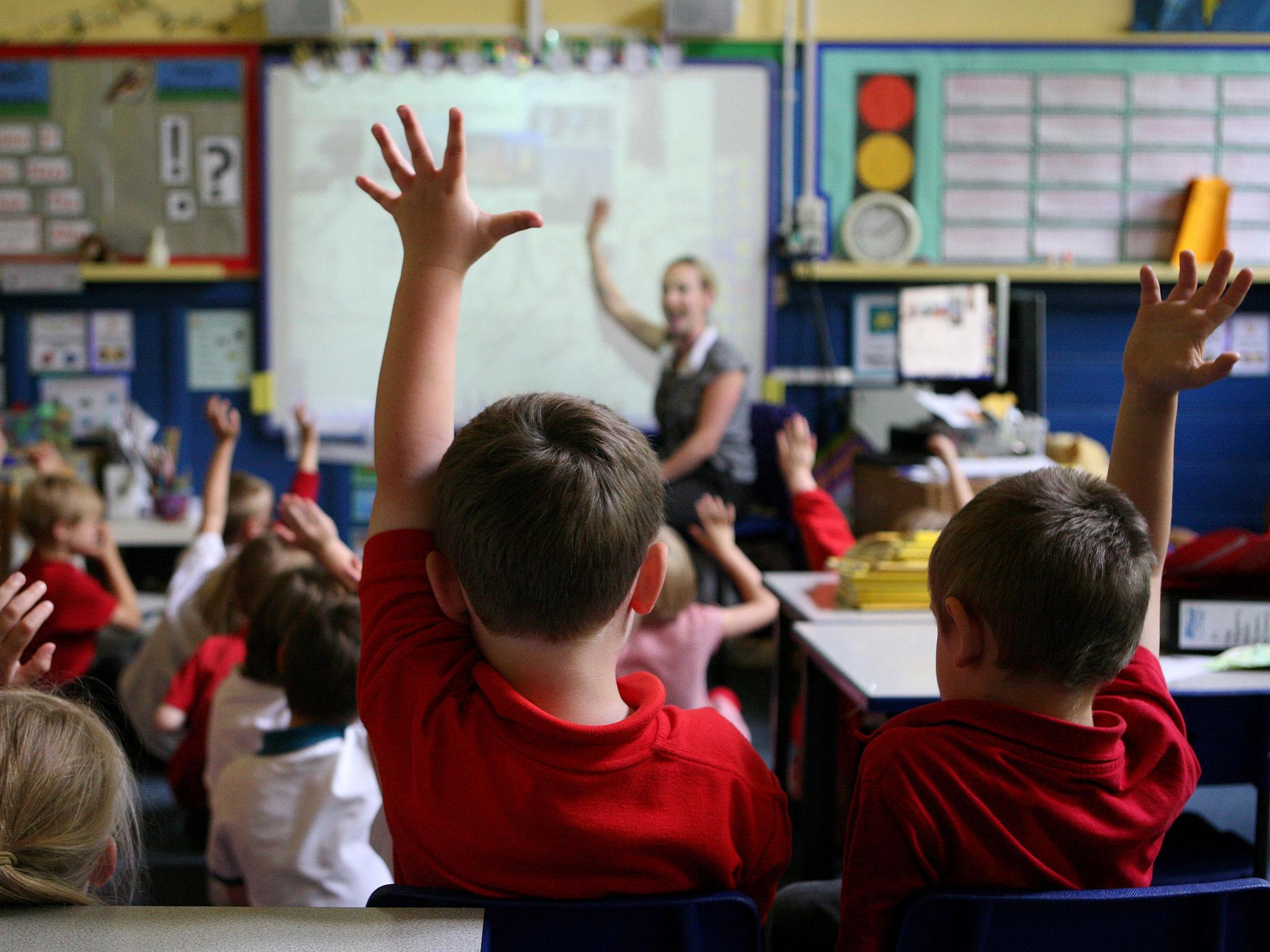Half a million primary school children ‘taught in super-sized classes’
More schoolchildren face being taught in classes of 31 or more as a result of booming pupil numbers and teacher shortages

Your support helps us to tell the story
From reproductive rights to climate change to Big Tech, The Independent is on the ground when the story is developing. Whether it's investigating the financials of Elon Musk's pro-Trump PAC or producing our latest documentary, 'The A Word', which shines a light on the American women fighting for reproductive rights, we know how important it is to parse out the facts from the messaging.
At such a critical moment in US history, we need reporters on the ground. Your donation allows us to keep sending journalists to speak to both sides of the story.
The Independent is trusted by Americans across the entire political spectrum. And unlike many other quality news outlets, we choose not to lock Americans out of our reporting and analysis with paywalls. We believe quality journalism should be available to everyone, paid for by those who can afford it.
Your support makes all the difference.More than half a million primary school children in England are being taught in “super-sized” classes, new anaylsis of Government figures has revealed.
Children in the South East and North West of the country are the worst affected, with more than 90,000 primary age children in each area in classes with over 30 pupils, according to Labour party analysis.
The number of pupils in large classes is “sky-rocketing”, the party warned.
The figures conclude that as of January this year there were 503,591 state primary school pupils (those aged five to 11) - in classes of 31 to 35 children, up from 498,152 the year before.
In addition, 39,088 primary children were in classes of 36 or more pupils, down slightly from 40,102 in 2016, and of these, 16,571 children in classes with 40 or more pupils, compared to 16,655 the year before.
A regional breakdown shows that 96,471 primary pupils in the South East were being taught in classes of 31 or more children, along with 92,049 in the North West.
At the other end of the scale, 20,512 children in the North East were in large classes.
The findings will fuel concerns about a continuing squeeze on school places across England.
The number of children attending primary school has increased in recent years, fuelled by a rising birth rate in the early 2000s.
This bulge is now making its way through the school system and recent government projections indicate that secondary school numbers in England are set to rise by almost a fifth over the next decade.
On top of this, schools are facing a teacher recruitment and retention crisis, leaving many school leaders with little choice but to merge classes as a result of staff shortages.
As of January, there were 343,020 secondary school pupils being taught in classes over 31 or more, compared to 304,691 at the same point in 2016.
Shadow schools minister Mike Kane, said: “These figures expose seven years of Tory failure in our schools. The number of pupils being taught in super-sized classes is skyrocketing while schools face the first real terms cuts to their budgets in a generation.
”This situation is unsustainable. If the Tories wanted to give every child the education they deserve they would ensure that children were not crammed into super-sized classes.
“A Labour Government would ensure that schools are built where they are needed, and cap class sizes at 30 for all primary school pupils.”
There is no limit on class sizes in England, apart from in infant schools. Legislation was introduced in 1998 limiting infant classes to 30 pupils, except in exceptional circumstances and under the condition the class size was brought down the next year.
The coalition government relaxed these rules around five years ago to allow class sizes to be above 30 for several years if necessary. The move came amid a significant rise in pupil numbers.
Government figures show that the average class size for primary schools is 27.1 pupils, and for secondaries it is 20.8 pupils.
A Department for Education spokeswoman said: “Just 0.9 per cent of primary school pupils are taught in classes of 36 or more - a figure that has fallen from 1.1 per cent since 2010 despite a rise in the primary school population.
”In fact, despite the number of pupils in England's primary schools increasing, the average primary class size has seen no change.“
Paul Whiteman, general secretary designate of the National Association of Head Teachers (NAHT), said: ”A rise in class sizes is down to real terms cuts schools are facing. Every day, school leaders are making tough decisions about class sizes, staffing and their curriculum in an effort to balance budgets.“
Join our commenting forum
Join thought-provoking conversations, follow other Independent readers and see their replies
Comments